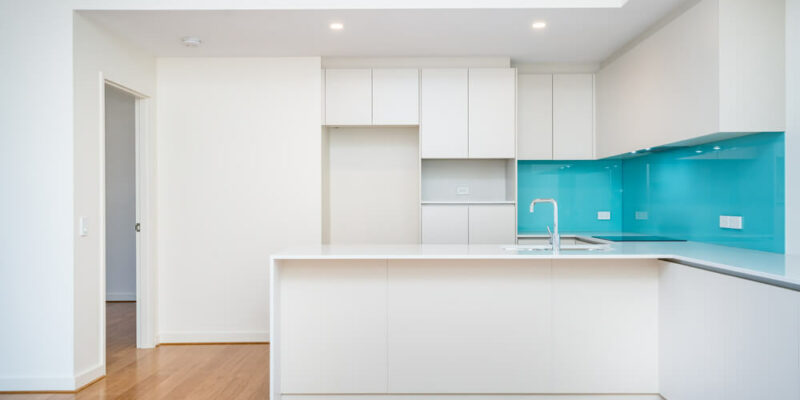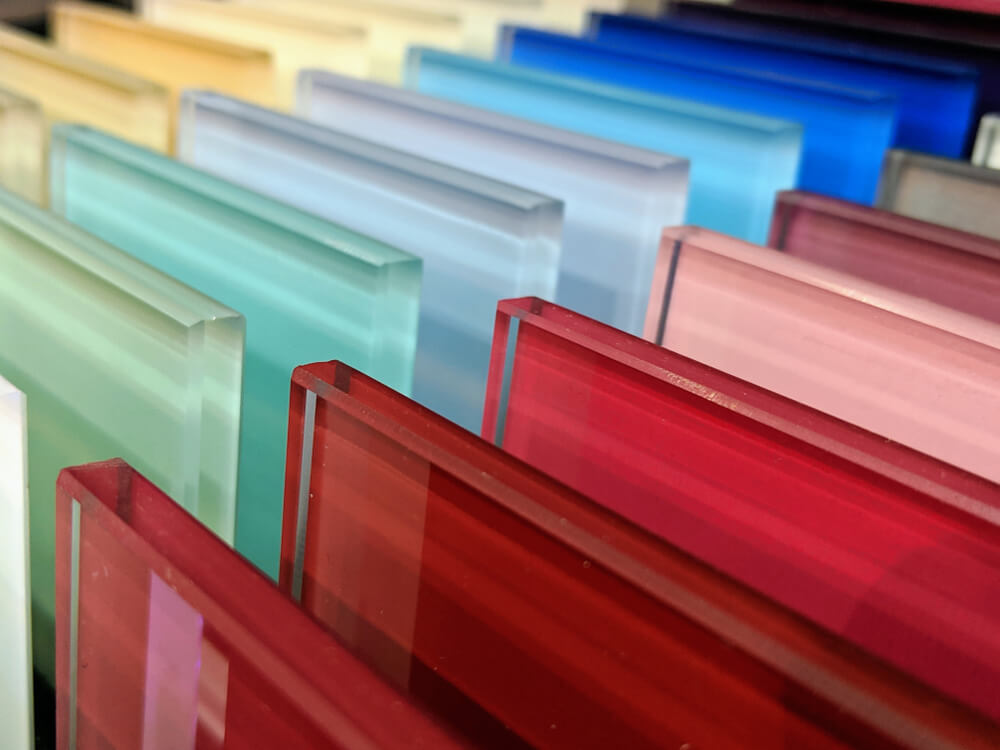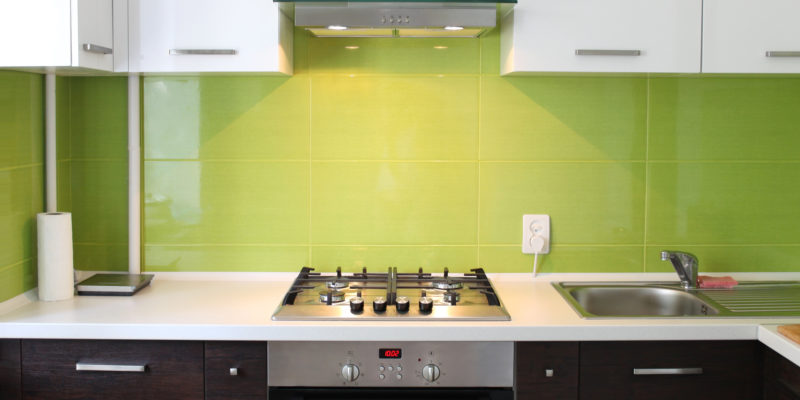It’s easy to overlook the importance of your splashback in the grand scheme of your overall kitchen design. However, this modest yet important design element can elevate any kitchen design. Whether you love the clean lines, sleek surface and understated colour palette of a modern kitchen or prefer the homespun comforts of a traditional kitchen, the right splashback makes all the difference in your overall design.
The beauty of using a glass splashback is that it’s cost-effective, easy to clean, hygienic, easy to install, and resistant to both heat and impact damage. Plus, there’s no denying the aesthetic appeal and versatility of a glass splashback.
With that in mind, let’s take a look at 10 stunning glass kitchen backsplash ideas that can add a wow factor to both modern and traditional kitchens. There are splashback ideas to match any interior scheme creating a stylish look for any home.
Idea 1: Add a pop of colour with vibrant glass splashbacks
Cooking should be fun. And what better way is there to inject a sense of playfulness into the look of your kitchen than by adding a bold splash of colour to your glass kitchen splashback?
Bold primaries like reds, blues, and yellows are very fashionable in 2023 and add a pop art sensibility to modern kitchens. Consider a bold hue like red or yellow for a statement piece that draws the eye and livens up your kitchen colour scheme. Alternatively, greens and browns are also very popular and may feel more cohesive in a traditional kitchen.
Of course, a vibrantly coloured glass splashback doesn’t need to be a singular block of colour. For a more subtle look, usea gradient effect to blend bolder and more understated hues. Or create an eye-catching contrast using colour blocking to create a contemporary flourish to the colour scheme.
Idea 2: Incorporate pattern with textured or patterned glass splashbacks
Just like your tiles, cabinets and wall art, your glass kitchen splashback can be used to add a lively burst of colours, textures and shapes to your design for eye-catching and stunning flourishes that lend personality to your design concept. A textured finish, for instance, can be used to mimic natural materials to give your kitchen a more rustic look, while also being much less porous and easier to wipe down than wood, stone, marble or granite.
Likewise, geometric and abstract patterns can add a mid-century or art deco feel to retro or eclectic designs. Geometrics and abstract patterns also work very well with the clean minimalism of a contemporary design creating a beautiful juxtaposition.
Idea 3: Create a sleek, modern look with mirrored or metallic glass splashbacks
The kitchen is a space that is filled with sleek stainless steel appliances, cutlery and cooking implements. Why not pay homage to the simple elegance of these kitchen necessities with a sleek and metallic glass kitchen splashback? A metallic finish creates a clean, cool and ultra-modern focal point in a modern kitchen. And again, it grants you the style benefits of a stainless steel splashback at an achievable price.
On the other hand, a plain mirror splashback can make cosy kitchens feel larger and more spacious. This makes mirrored glass a fantastic option for smaller, rustic kitchen designs increasing the natural light inside to make them feel bigger.
Idea 4: Go for a natural look with stone or marble-inspired glass splashbacks
If bold colours aren’t your thing, there are lots of more natural colours and looks that you can achieve with a glass kitchen splashback. Modern techniques can create realistic texture effects on a glass backsplash to make them look like a stone, marble or granite splashback. This can be used to create a sense of continuity with your countertops while also giving your splashback the practical and cost benefits of glass.
This minimalist abstract look feels very at home in a kitchen with a modern finish. Yet these materials also have a timeless nature and can blend seamlessly with the rich timbers, shaker-style panels, and rough-hewn stone of more traditional country kitchens too.
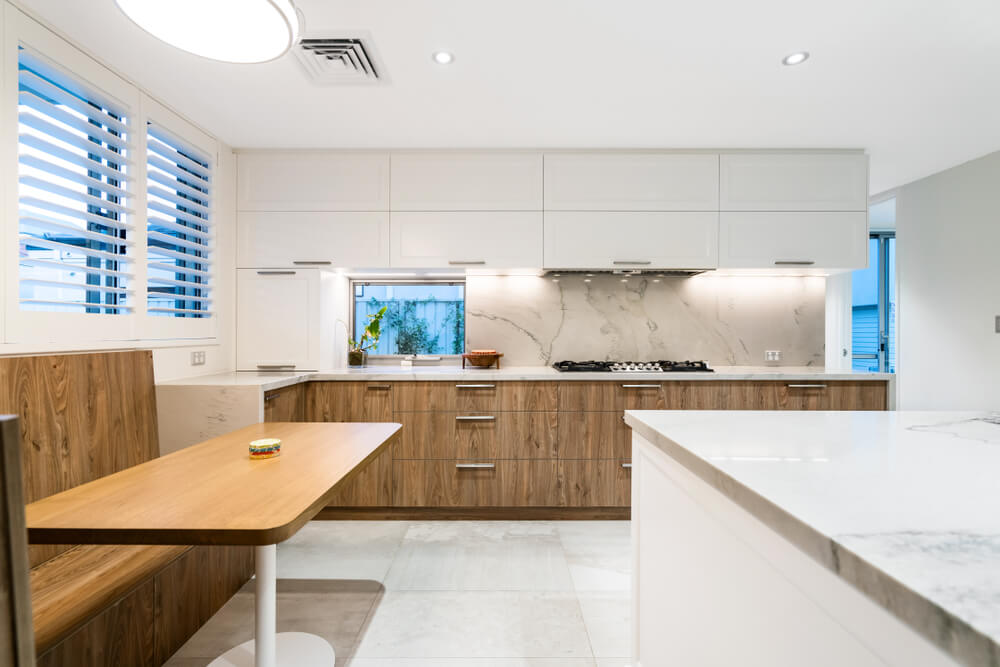 Idea 5: Make a statement with a graphic or illustrated glass splashback
Idea 5: Make a statement with a graphic or illustrated glass splashback
Your kitchen should be as unique and full of personality as you are. The kitchen should be a place where you feel at home, and able to cook with confidence. As such, you should feel free to personalise your kitchen space with a bold graphic or illustration that lends the room a more idiosyncratic charm.
Feel free to be as daring or playful as you like in terms of colour palette, designs and images. You’ll find that everything from cityscapes to nature scenes can add a touch of drama to your splashback. However, if you prefer to opt for simple black and white, this can add a timeless look to your concept.
Idea 6: Add a touch of whimsy with a patterned or colourful backsplash
If the symmetry and geometric simplicity of your kitchen leave you wishing for a touch of the whimsical, your glass kitchen splashback is the perfect place to provide this. Adding a playful pattern or a splash of a bold colour like cyan, pink or red can add an adventurous and kid-friendly touch to your kitchen’s design.
You can also use printed patterns to ground your design rather than just create a dramatic statement. Adding a cubist pattern will bring a 50s retro flavour, while a fleur-de-lis design will call a more classical Victorian feel perfect for a period property.
Idea 7: Use a glass splashback as a canvas for a custom design
Glass kitchen splashbacks allow for incredible versatility with virtually any image, texture or design easily printed onto their surfaces. However, you may wish to opt for a splashback that is completely unique to your kitchen alone. Again, the versatility of glass allows you to do this with ease.
A custom design allows you to imprint an image that is uniquely personal onto your glass kitchen splashback. This can be anything from your own illustration to an extrapolation of a child’s drawing, your favourite artwork or even a family photo. You’re limited only by your imagination.
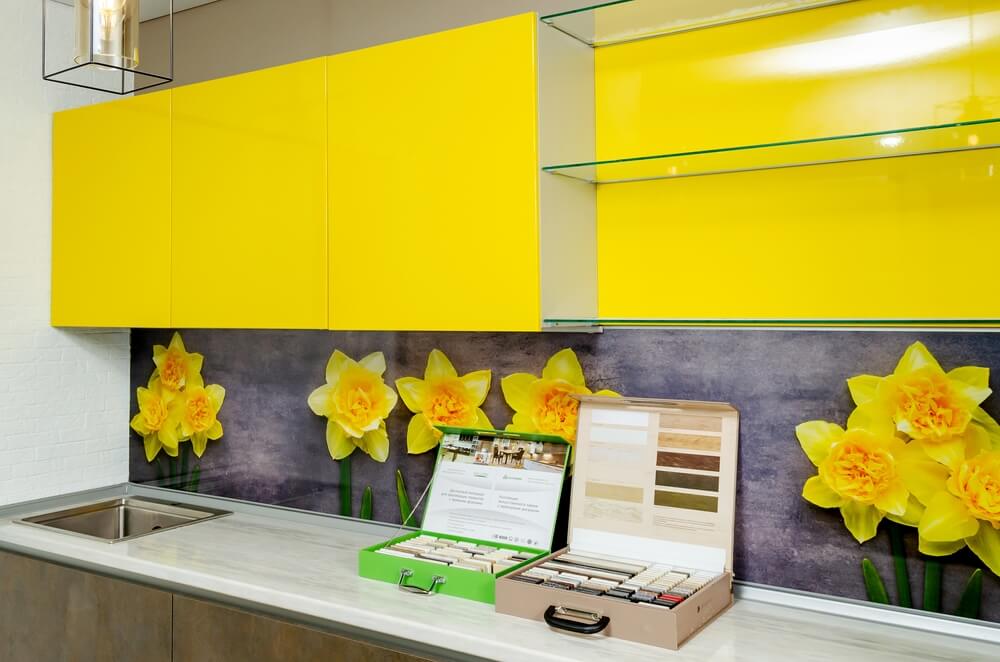 Idea 8: Mix and match with multiple glass splashbacks
Idea 8: Mix and match with multiple glass splashbacks
Can’t decide on a single image, pattern, colour or texture?
Who says you have to?
Choosing a glass kitchen splashback enables you to experiment with different colours, patterns, textures and finishes in different areas of the kitchen. This can enable you to compartmentalise your space, create cohesion within different areas of the kitchen or create a dynamic sense of juxtaposition that makes your kitchen come alive.
Idea 9: Use a glass splashback to create a cohesive look with other kitchen elements
A glass splashback can be an eye-catching and beautiful addition to your kitchen design. But it can also be subtle or discrete. The beauty of glass is that its surface can be printed to replicate any colour, texture or material. This makes it easy to match the colour or finish of your kitchen splashback with other elements such as wall tiles, cabinets, or countertops.
This can help to create a more uniform and cohesive look and allow the glass to create the same effect as materials that might be impractical or costly to use as a splashback. Rather than fill the wall space with costly mosaic tiles, a glass splashback printed to look like tiles is much cheaper as well as easier to clean and fit.
Idea 10: Go for a minimalist look with a clear or frosted glass splashback
Some kitchens benefit from a glass splashback that calls attention to itself, while others may benefit from letting other design elements do the heavy lifting. In which case, a clear glass splashback can be just the solution you’re looking for.
In a traditional or loft-style kitchen it can protect the bare brick or stone of the walls without interrupting the look. In a contemporary design with painted walls, it can prevent stains from undermining the pristine aesthetic. It can even double as a dry-erase whiteboard on which to write down important messages, plan meals or create lists of ingredients.
If you want to create a softer and more subtle look, frosted glass may be a more suitable alternative. Frosted glass can enhance and diffuse the ambient light to create a calming and soothing effect. All while protecting your walls from unsightly stains.
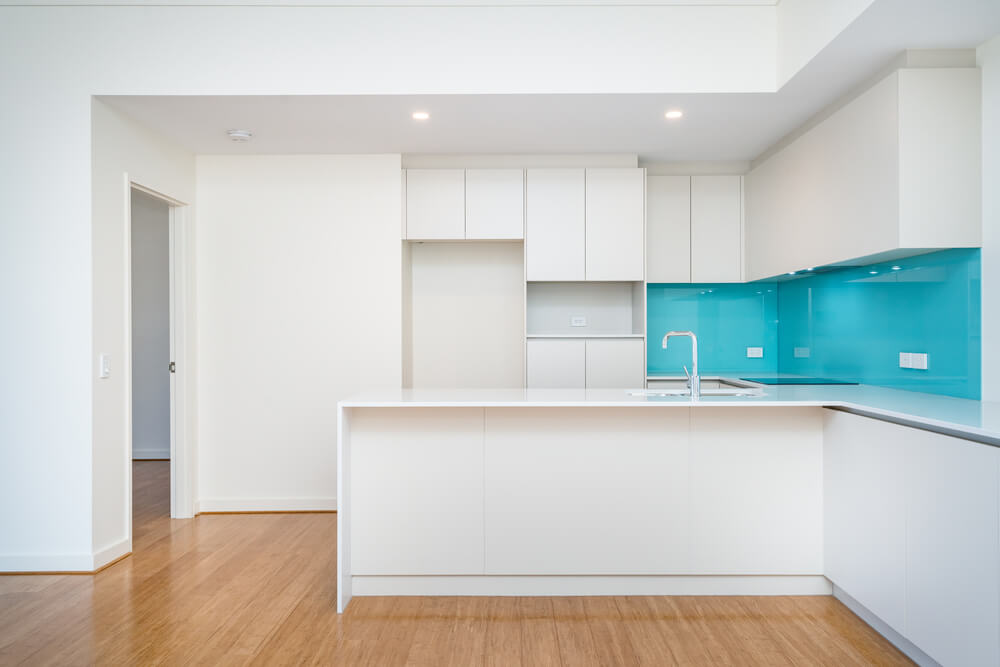 Glass is first class
Glass is first class
When it comes to kitchen splashback ideas, glass is a fantastic material to play with. It’s beautiful, versatile, hard-wearing and hygienic. Best of all it’s even cost-effective. At KLG we love to see glass used to its full potential around the home, more than just windows and doors.

